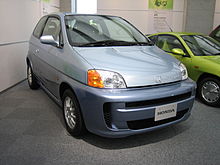Hydrogen Cars Are Here Exploring the Latest Innovations. Hydrogen acts as a fuel by combining with oxygen in a fuel cell, creating electricity and water vapor as byproducts through an electrochemical reaction, essentially generating power from the chemical energy stored within the hydrogen molecule. This process produces no harmful emissions, making it a clean energy source when produced using renewable methods. Renewable methods use natural resources that are naturally replenished and won’t run out.
Hydrogen Car Production Methods:
- Electrolysis, which involves Splitting water into hydrogen and oxygen using electricity from renewable sources, is considered the most environmentally friendly method.
- Steam methane reforming: Currently the most common method, using natural gas with carbon capture and storage to minimize emissions.
- Biomass gasification: Producing hydrogen from organic materials like wood or agricultural waste.
- Thermochemical water splitting: Utilizing high temperatures from solar or nuclear energy to split water.

In June 2023, the Japanese government revised its Basic Hydrogen Car Strategy to support corporate initiatives. This strategy identifies nine key technologies, including fuel cells and water electrolysis devices, and has decided to invest over JPY 15 trillion ($98.8 billion) over the next 15 years. Apr 10, 2024
The first hydrogen car is widely considered to be the Electrovan, developed by General Motors in 1966; it was a van converted to run on a hydrogen fuel cell, marking the first road vehicle powered by hydrogen fuel cell technology.
Key points about the Electrovan:
- Manufacturer: General Motors
- Year introduced: 1966
- Design: A modified Chevrolet Handivan
- Limitations: Due to safety concerns and limited infrastructure the Electrovan Hydrogen Car was only used on company property.
Honda FCX, along with the Toyota FCHV, is the world’s first government-certified commercial hydrogen fuel cell vehicle.

Leave a Reply